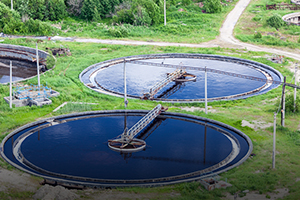From Toilet to Tank
 The widespread adoption of hydrogen-fuel-cell vehicles has been agonizingly slow, due in large part to what’s been termed the “chicken-and-egg” problem: until an infrastructure of hydrogen fuel stations exists, no one will buy hydrogen cars – but no one wants to build the fuel stations unless there are cars to support them. Toyota has remained committed to hydrogen as the best alternative for zero-emissions cars of the future, going so far as to make over 5,000 of its fuel-cell-related patents available to the industry royalty free. And now it may have found a way around the problem of hydrogen supply with a process for turning sewage into hydrogen fuel.
The widespread adoption of hydrogen-fuel-cell vehicles has been agonizingly slow, due in large part to what’s been termed the “chicken-and-egg” problem: until an infrastructure of hydrogen fuel stations exists, no one will buy hydrogen cars – but no one wants to build the fuel stations unless there are cars to support them. Toyota has remained committed to hydrogen as the best alternative for zero-emissions cars of the future, going so far as to make over 5,000 of its fuel-cell-related patents available to the industry royalty free. And now it may have found a way around the problem of hydrogen supply with a process for turning sewage into hydrogen fuel.
Microorganisms are added to sewage sludge (the by-product of wastewater treatment) to break down the solid waste and produce biogas, which is about 60 percent methane and 40 percent carbon dioxide (CO2). The CO2 is filtered out and water vapor is added, creating a mixture of CO2 and hydrogen. When the CO2 is filtered out again, the result is pure hydrogen.
The beauty of this process is that it can be set up at any wastewater processing plant, so it can be automatically scaled up to meet the demands of even the largest cities or scaled down to bring hydrogen production capabilities to smaller locales. In addition, biogas is a better source of hydrogen than natural gas – and it’s totally renewable.
There are other upsides for hydrogen as compared with battery power when it comes to consumers. The ability to refuel quickly, longer range, and bigger vehicles will improve the chances of convincing drivers to give up their gas-guzzlers. In addition, the cost of a fuel-cell car should be more comparable to that of current gasoline models – within a few thousand dollars over the next ten years.
For information: Toyota Motor Company; Web site: https://ssl.toyota.com/mirai/#